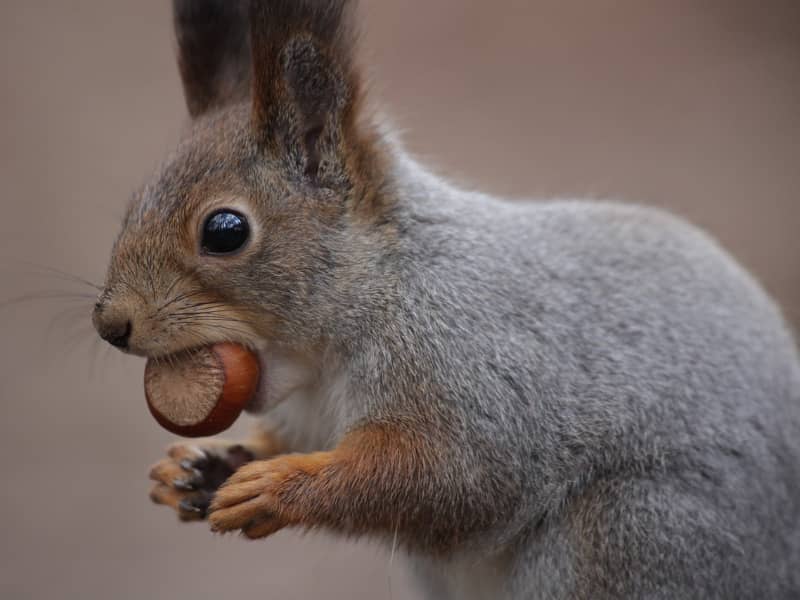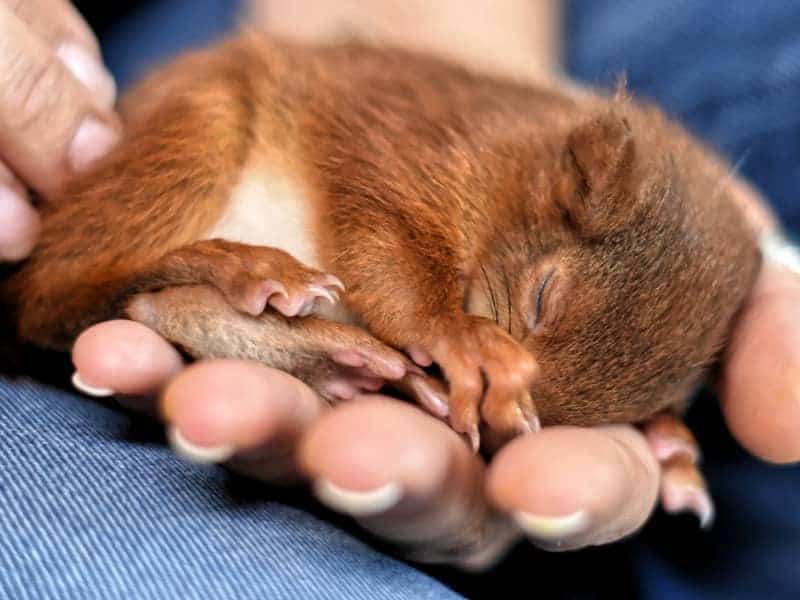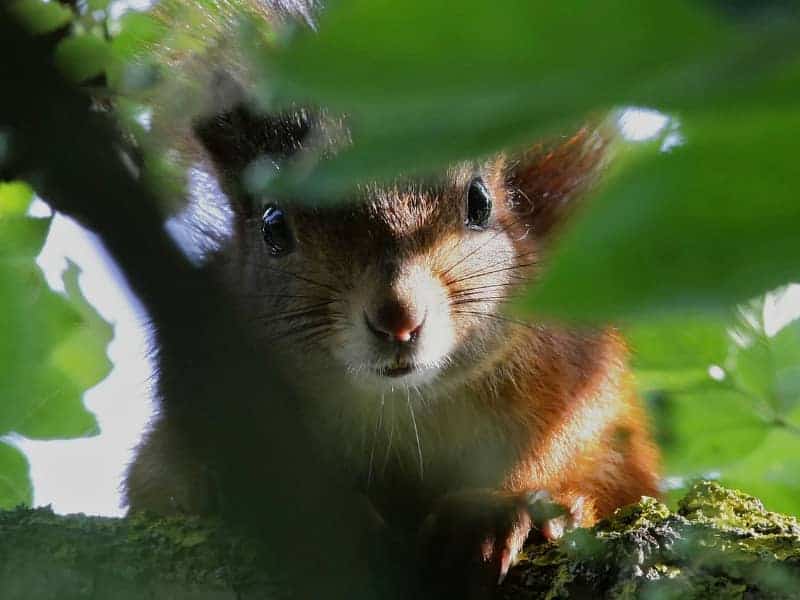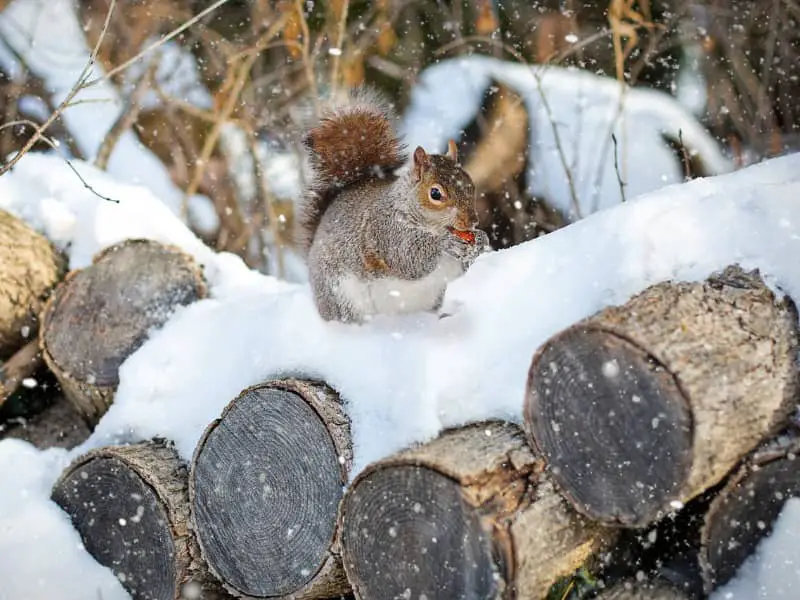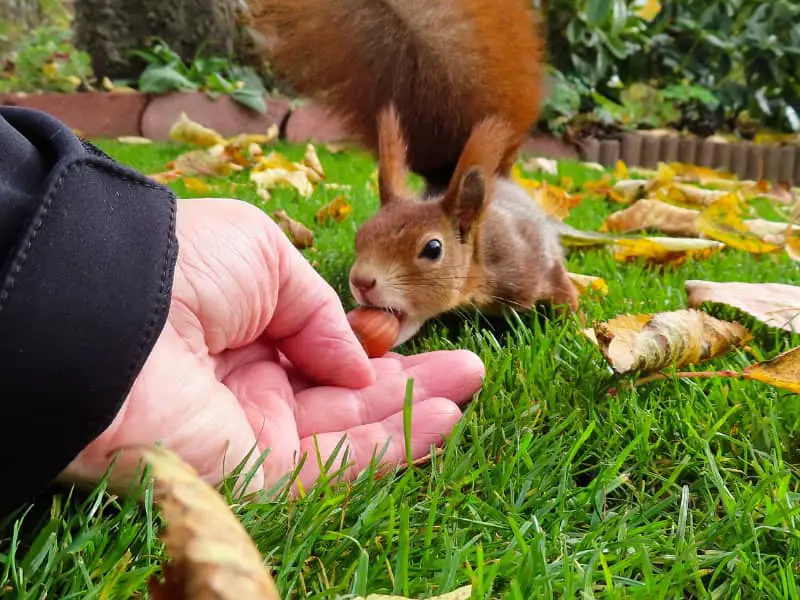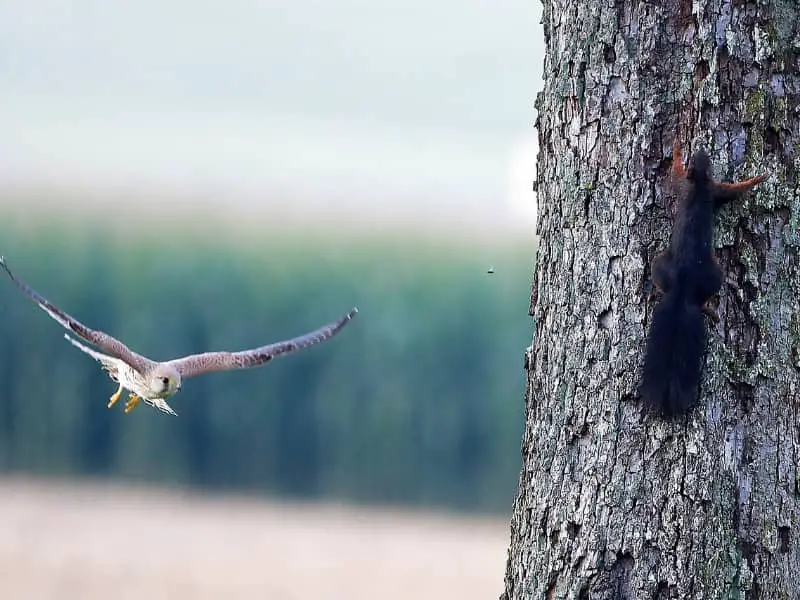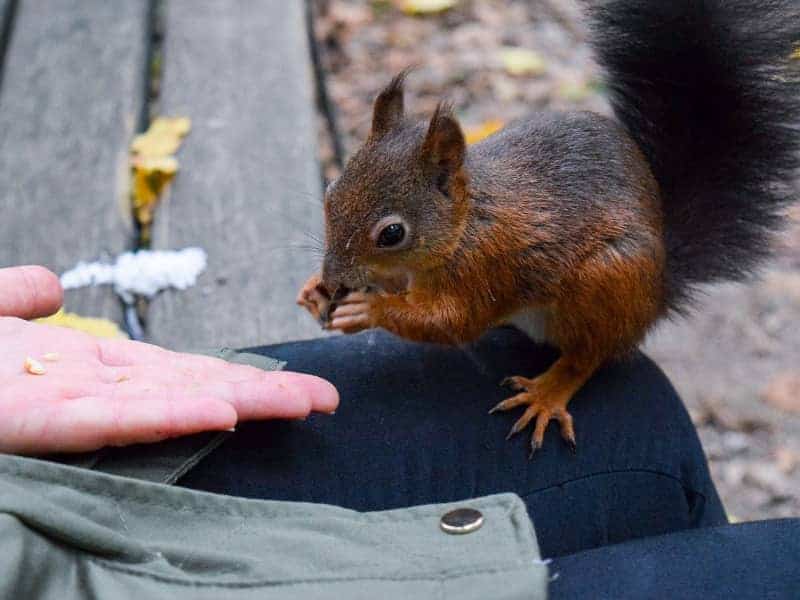
Squirrel age
The squirrel age is given as a maximum of 6 to 7 years. However, most squirrels live on average just 3 years. But what can be the reason for that? We would like to tell you more about the life expectancy of squirrels.
- Squirrel age
- Low life expectancy
- How can you help a squirrel?
- Natural garden as habitat and food source
- Offer a nesting place
- Make your garden squirrel safe
- Protect squirrels
- How do you recognize the squirrel age?
- Why does a young animal seldom grow older than 1 year?
- Can you tell the squirrel's age by the color of its fur?
- Squirrel age - the determination
- Low life expectancy
Low life expectancy
When it comes to squirrel age, you need to know that only about every 4th or 5th animal survives the first few weeks. If the rodents have reached an age of 6 months, then their average life expectancy is just 3 years. Only in rare exceptions do wild squirrels reach an age of about 7 years. In captivity, the animals also live up to 10 years.
How can you help a squirrel?
Especially in the vicinity of cities, the small rodents are particularly dependent on your help. They often lack food, water and, most importantly, a suitable nesting place. With just a few things you can significantly extend the life expectancy of squirrels. But what can you do?
Natural garden as habitat and food source
You can increase the squirrel age by a lot by always providing the rodent with enough food. In addition to hazelnut bush or walnut tree, you can also help the squirrel with a feeding house. The small rodent can thus feed in a natural way and build up stocks. You provide a varied habitat that also benefits other animals. Therefore, it is important to have leaves, tree needles or branches lying around in your natural garden. They provide shelter and food for the animals.
Offer a nesting place
Many squirrels no longer have young because they lack suitable nesting sites. If there are no trees or natural caves in your garden, provide a gable for the possibility of nesting. If you find out that a squirrel has had young, then provide sufficient food so that the little animals survive the dangerous first 6 weeks. You can actively contribute to the preservation of the animals.
Make your garden squirrel safe
It is not uncommon for squirrels to drown in rain barrels. If they fall in, they cannot save themselves and have to drown in agony. Therefore, it is important that you always cover rain barrels and create an exit possibility, should the animal still fall in.
Especially in summer it is important that you give the squirrel the opportunity to quench his thirst. Shallow bowls or a bird bath are ideal. The water points should not be placed near the ground, because here lurk dangers from predators.
Protect squirrels
Even though it was mentioned above that the squirrel age in captivity can be quite 10 years, it is strictly forbidden to keep squirrels. Therefore, you are not allowed to hunt and catch them. Squirrel nests are also subject to very strict protection. If you are caught removing or damaging a squirrel nest and you are reported to the police, you will be subject to very high fines.
How do you recognize the squirrel age?
You can tell the squirrel's age by a few very distinctive signs. A 4 week old animal has about 2 mm long fur. Even the tail does not have longer fur at this time.
After about 6 or 7 weeks the body is completely covered with fur. Slowly it also begins to look fluffy. The fur on the tail does not develop completely until about 10 to 12 weeks. Only then the tail also becomes bushy.
Why does a young animal seldom grow older than 1 year?
This is partly due to a harsh winter and partly due to diseases or predators. The main enemies of the squirrel are the eagle owl, the hawk and the pine marten. The young animals have hardly a chance against these enemies.
But not only the Enemies in nature decimate the squirrels. In many cases, man also ensures that the squirrel age barely reaches the normal average. Damaged trees are cut down and the undergrowth is thinned out. The squirrels thus lack nesting opportunities and food sources. In search of food they often cross dangerous and busy roads in vain.
Can you tell the squirrel's age by the color of its fur?
No, because the color of the fur is mostly due to the diet. In higher mountainous areas, where the animals feed almost exclusively on seeds, they usually have brown fur coloration. In regions with a varied food supply you will often find squirrels with a red or reddish brown fur.
Squirrel age - the determination
The following table gives you an indication of the squirrel's age.
| Age | Features |
| 1 day | As big as a cork; hairless; pink skin |
| 1 week | pink body; hairless, closed eyes; ears rest against the head and are closed |
| 7 - 10 days | Downy and reddish hairs around nose and muzzle; small pin-sized bumps on belly and upper arms; tactile hairs grow here later on |
| 2 weeks | pink to gray body downy hair; belly and legs are pink and hairless; closed eyes |
| 2 - 3 weeks | Head, shoulders and back slowly grow hair; eyes and ears closed; lower incisors break through |
| 3 weeks | soft coat develops; belly, legs and underside of tail still hairless; eyes and ears closed; weight 30 - 50 g |
| 4 weeks | Hair all over the body; white fur stands out on the belly and legs; eyes and ears closed; weight 50 - 80 g |
| 4 - 5 weeks | Coat becomes denser; eyes begin to open; ears open after 28 - 35 days; weight 80 - 100 g |
| 5 weeks | Coat on the whole body becomes denser; tail hair very short; weight 80 - 110 g |
| 5 - 6 weeks | Upper incisors begin to erupt; tail hairs still attached; animals can hold themselves upright; more periods of wakefulness; weight 100 - 130 g |
| 6 - 7 weeks | Coat complete; animals can see and become more agile; first solid food; weight 110 - 150 g |
| 7 - 8 weeks | Tail becomes bushy; cracks sunflower seeds; solid food is taken and digested; weight 130 - 200 g |
| 8 - 9 weeks | very active; looks like a ready squirrel - only smaller; weight 160 - 250 g |
| 8 - 10 weeks | very agile and dexterous; molars are completely erupted; weight 180 - 270 g |
| 10 - 12 weeks | 75 % of the final size; can provide itself with nuts; weight 200 - 330 g. |
| 12 weeks | Weight 220 - 350 g |
Author

-
Garden animal - A life with nature
Welcome to my animal blog! My name is Dirk and I am happy to take you on my journey through the fascinating world of animals and gardening.
Born 54 years ago, I have had an insatiable curiosity for the animal world around me since childhood. Although I have moved professionally in other industries, my true passion has always been animals and nature. It is remarkable how a small garden has become such an important part of my life.
Many of my fondest memories are associated with the animals that share our home. Whether it's the curious squirrels that scurry across the trees in the morning, the colorful variety of birds that visit our feeders, or the busy bees and butterflies that pollinate our flowers, every moment with them is invaluable to me.
This blog is my contribution to share my experiences, discoveries and insights with like-minded people. Here I will share stories of unforgettable encounters with animals, give tips on gardening and creating wildlife-friendly habitats, and take you on my journeys through nature.
Thank you so much for being here!
Cordial,
Dirk aka garden animal
Last posts
- 27. February 2024PetsVeganes Hundefutter – Grün und Gesund?
- 18. January 2024ChickensOregano für Hühner
- November 27, 2023HamsterDiurnal hamsters
- November 24, 2023HamsterHamster hammock

